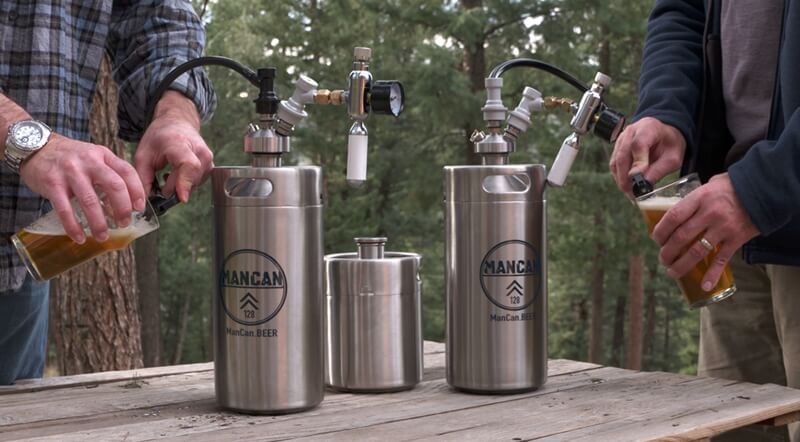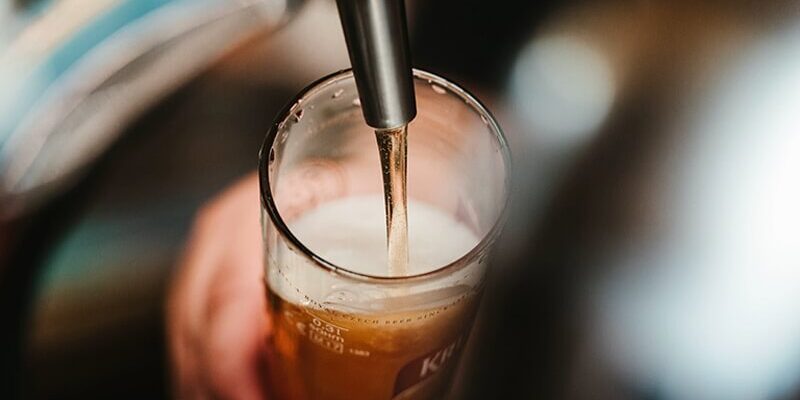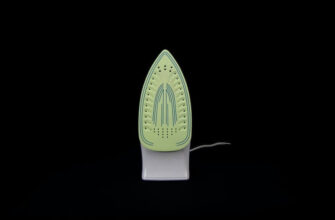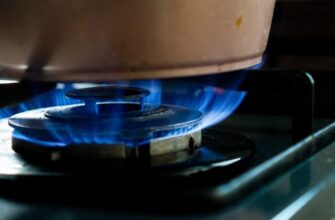You like to tap a fresh beer or other delicacies at home? To keep everything fresh and hygienic, you should clean the dispenser regularly. This guide tells you exactly how to do that and keep your drinks cool.
- When should you clean the tap?
- What are the different types of cleaning?
- Simple cleaning with water
- Cleaning in the dishwasher
- Cleaning the hoses with a sponge
- Cleaning with chemical cleaning agents
- What do you need for cleaning
- Cleaning the Hobby dispenser: step by step
- Always freshly tapped with little effort
When should you clean the tap?
In professional catering, every host is responsible for the health of his guests. Therefore, daily hygiene and cleaning is especially important there. But also tapping plants for the domestic use want to be maintained. In order to prevent the tapped beverages from being contaminated, you should clean your equipment regularly and on certain occasions:
- Before first use: Before you use your dispenser for the first time, you should rinse it once to remove residues and dirt that have arisen during production. You can read about what you should do in the operating instructions for the system. For home dispensers, it is often sufficient to tap the first glass and pour away the contents.
- After changing the keg: Before you connect a new keg, you should thoroughly clean the entire dispensing unit (hoses and tap).
- If the system has not been used for a long time: The same applies here as when changing the keg.
- Perform a basic cleaning of the dispensing unit before you put the system back into operation. If you are using hoses supplied with the keg, you only need to rinse the tap thoroughly.
- After each use: Each time you have used your dispensing unit, you should clean the drip tray, the drip grid, the tap and, if necessary, the hoses once with hot water.
What are the different types of cleaning?
Depending on how dirty a tap unit is, there are different methods to clean it. Also, it depends on the device how you should do the cleaning.
Simple cleaning with water
To take care of a hobby tap, you don’t need to put a lot of effort. The most important thing is to rinse the individual components once after each use to remove liquids and foam. Hot water is usually sufficient for this. If dirt has accumulated, you can also use a little washing-up liquid.
To flush the hoses of the system, a so-called cleaning balloon is suitable. It helps you to pump water through the hose.
Cleaning in the dishwasher
Some Hobby dispensing units can also be cleaned in the dishwasher. You can find out whether the components of your dispenser are dishwasher-safe in the operating instructions. But: Even if the dispensing unit is suitable for cleaning in the dishwasher, you should not do without a pre-wash. The hoses in particular should be rinsed separately beforehand, as this is where residues form most quickly.
Cleaning the hoses with a sponge
Special cleaning sets are available for cleaning the hoses of professional dispensers. They contain sponges that are pressed through the hose with the help of water pressure and thus remove even stubborn dirt. However, this method cannot be used with every dispenser. You can also find out whether it is suitable for your model in the operating instructions or directly from the manufacturer.
Cleaning with chemical cleaning agents
Professional dispensers are treated from time to time with special cleaning agents to prevent the formation of bacteria. They are usually used when a dispenser has not been used for a very long time. The cleaning agent is pumped into the system and through all the pipes via a fresh water tank. There it takes effect for some time. Fresh water is then pumped through the system until all remnants of the cleaning agent have been removed.
Again, home dispensing equipment does not usually need to be cleaned with special cleaners. If in doubt, ask the manufacturer whether this method is suitable and necessary for your device.

What do you need for cleaning
How a dispenser should be cleaned always depends on the corresponding model. Many devices for home use come with a suitable cleaning kit. Some also have an integrated cleaning program that does most of the work for you. If you do it yourself, you only need a few things:
- warm to hot water
- a clean cloth
- if necessary some washing-up liquid
- if necessary a cleaning balloon (already included in some systems)
Note: If you are thinking about cleaning the lines of your dispenser with sponges, you will need some more equipment. In addition to the sponges, you will need either a special barrel or a fresh water connection. The system is connected to this to generate the water pressure that forces the sponges through the hoses. However, as described above, this method is not suitable for every tap.
In the following, we describe the common cleaning method for hobby dispensers without sponges and special cleaning agents.
Cleaning the Hobby dispenser: step by step
Once you have everything ready for the cleaning action, you are ready to go:
- Unscrew the tap and rinse it in hot water. If it is stuck, you can use some dishwashing detergent.
- Detach the hoses from the keg and the system and rinse them in water as well. The water should not be too hot, otherwise the material can be damaged. If possible, use a cleaning balloon to rinse the hoses thoroughly. Make sure that no foam remains.
- Remove the drip tray and the drip grid and clean them with water and some dishwashing detergent. Use the rag to remove all dirt residue.
- Let all the cleaned parts dry and then reattach them to the tap.
Always freshly tapped with little effort
With a tap system for your home, you are fulfilling a small dream. However, to ensure that it works for a long time and that the beer remains germ-free, it also needs a little care. Fortunately, hot water is usually sufficient for cleaning. Hobby dispensers in particular are usually designed so that you can keep them clean with little effort. For professional systems, chemical cleaning may be necessary from time to time. If you are not quite sure which method is the right one, a look at the operating instructions or a call to the manufacturer will help.
Professional tapping: What rules apply?
Until 2006, there was a dispensing regulation for restaurants. Among other things, this regulated how often a dispensing system had to be cleaned. Today, every pub owner is responsible for taking appropriate hygiene measures. What these are depends on the equipment he uses. There are no legal requirements for this. However, pubs are inspected by the local authorities about once a year. If a tap system has not been adequately maintained, the operator must answer for this.









